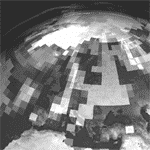Book Review
Ed. A. Scharl; Springer 2004, ISBN: 1-85233-783-4; An interdisciplinary investigation of environmental communication from four interrelated perspectives: Raising Awareness, Environmental Science, Corporate Sustainability, Networks & Virtual Communities.
Summary | Content | Buy Online | Review
Applied Environmental Education & Communication, 4(2), 2005, p199;
by Nicholas K. Gaydos & Tor H. Hough (www.aeec.org).
Environmental Online Communication is an effective survey of the ‘state of the art’ in online communications from a distinctly environmental perspective. It addresses technical, social and policy issues that challenge practitioners of environmental education and communication. It is an interdisciplinary investigation of fundamental concerns from both theoretical and practical perspectives. In a day and age when economics dictate that the environmental community must accomplish more with less in order to merely maintain the status quo, this book is filled with strategies for success. Topics covered by the book include:
- Raising Environmental Awareness
- Improved public access to environmental information and data
- More effective advocacy through enhancement of online fund raising, promotion, and systems usability
- Sustainable approaches to online education, distance learning and collaboration
- Environmental Science
- Structuring data for reuse and technologies related to sharing that data across the internet
- Referencing information geographically using data, metadata, and maps
- Innovative uses of distributed computing resources
- Corporate Sustainability
- Maintenance and reuse of information systems
- Sharing data in industry standard formats to reach the broadest audiences, for maximum impact and return on investment
- Networks and Virtual Communities
- Creating systems that encourage social networking and use its benefits to enhance the discourse between environmental communicators
- Using the patterns and use of internet information systems to better manage information, knowledge, projects and people
This book should age relatively gracefully and provide a source of useful references for the practitioner for at least five years. While the particular technical issues addressed within the research articles will likely be overcome as technology advances, the methodologies and designs may have a longer shelf life. Regardless, the book offers an excellent overview of the problems and potential solutions in contemporary environmental communication.
If anything, the title of the book may somewhat undersell its content. This is not just another summary of the technology ‘flavor of the day’ or a dummy’s guide to building pretty Web sites for online communication. For the most part, the academic rigor with which the material is presented and the research methods employed by the authors should satisfy even a hardened skeptic that the authors are speaking from a foundation of knowledge and not merely opinion. From this rigor, the practitioner can take examples of how metrics are used to measure success and scientific research is used to guide action and inform policy. The topics addressed cut a wide path across the landscape of problems confronting the environmental community, they
are as real as the solutions explored.
For the environmental educator and communicator, with a modest technical background, this book will not be an easy read but it will be rewarding. There is technical depth in the treatment of most subjects but not excessively so. A reader without deep understanding of the subject matter can approach the material from a more general systems perspective and take away plenty of useful insights.


